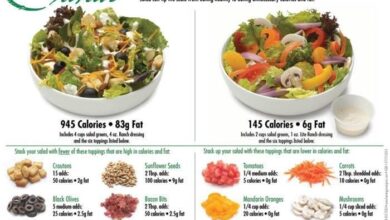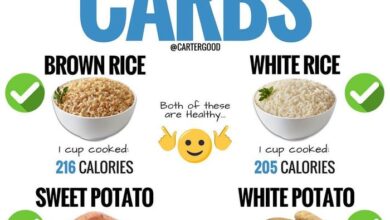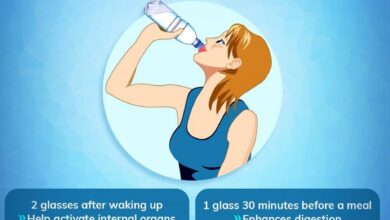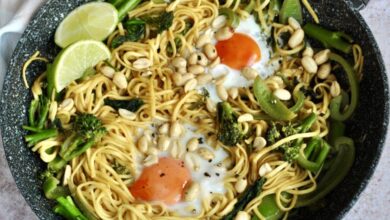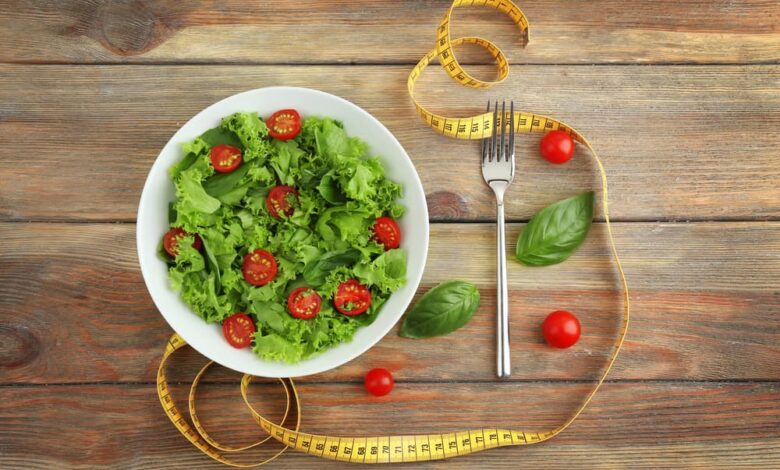
Calorie Cutting for Athletes: Losing Weight Safely
Calorie cutting for athletes looking to lose weight can be a tricky balancing act. On one hand, you need to fuel your training and performance. On the other, you’re striving for a healthy weight. It’s about finding that sweet spot where you can achieve your goals without jeopardizing your athletic potential.
This post dives into the strategies, considerations, and potential pitfalls of calorie cutting for athletes. We’ll explore how to determine your calorie needs, create a sustainable plan, and address common concerns like nutrition, recovery, and mental health. Whether you’re a marathon runner, a competitive swimmer, or a weekend warrior, this guide provides valuable insights to help you navigate the world of calorie restriction while maintaining your athletic edge.
Understanding Calorie Cutting for Athletes
Calorie cutting is a common strategy for athletes looking to lose weight, but it’s crucial to understand the potential risks and benefits before embarking on this journey. While it can be an effective way to shed excess pounds, it’s important to approach it with caution and prioritize a balanced and sustainable approach.
Impact of Calorie Cutting on Athletic Performance
Calorie cutting can have a significant impact on athletic performance, both positive and negative. It’s important to understand how these changes can affect your body and training.
Benefits of Calorie Cutting for Athletes
- Improved Body Composition:Calorie restriction can help athletes reduce body fat percentage, leading to a leaner physique and potentially improved performance in endurance sports.
- Enhanced Performance in Certain Sports:In sports that emphasize power-to-weight ratio, such as cycling and rowing, reducing body weight can translate to faster times and improved performance.
- Reduced Risk of Chronic Diseases:Maintaining a healthy weight through calorie restriction can help athletes reduce their risk of developing chronic diseases like type 2 diabetes, heart disease, and some types of cancer.
Risks of Calorie Cutting for Athletes
- Decreased Energy Levels:Severely restricting calories can lead to fatigue, reduced energy levels, and impaired training performance.
- Muscle Loss:If calorie restriction is too aggressive, the body may start breaking down muscle tissue for energy, compromising strength and power.
- Increased Risk of Injuries:Muscle loss and reduced energy levels can increase the risk of injuries, especially in high-impact sports.
- Hormonal Imbalances:Extreme calorie restriction can disrupt hormonal balance, leading to issues with menstruation, bone density, and overall health.
Examples of Calorie Cutting’s Impact on Performance
- Marathon Runners:A marathon runner who reduces body weight through calorie restriction may experience improved running economy, allowing them to cover the same distance with less energy expenditure.
- Weightlifters:A weightlifter who drastically cuts calories may experience a decrease in strength and power due to muscle loss, hindering their ability to lift heavy weights.
- Soccer Players:A soccer player who restricts calories too severely may experience fatigue and reduced speed on the field, impacting their ability to perform at their best.
Determining Calorie Needs for Athletes
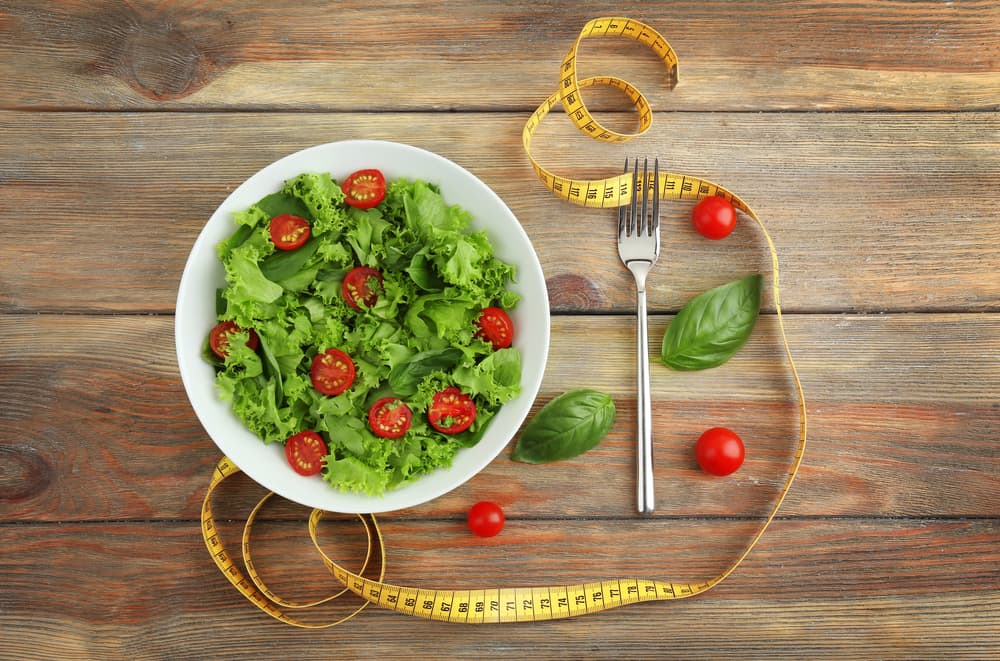
To effectively cut calories for weight loss, athletes need to understand their individual calorie requirements. This involves calculating their daily calorie needs, considering various factors that influence these needs.
Factors Influencing Calorie Needs
Several factors influence an athlete’s daily calorie needs. Understanding these factors helps in determining the appropriate calorie intake for achieving weight loss goals.
Calorie cutting for athletes looking to lose weight can be a delicate balance. You want to ensure you’re still getting the nutrients you need to fuel your workouts, but also creating a deficit to shed pounds. A common question is whether standing burns enough calories to aid weight loss, and the answer, as you might guess, is a bit more nuanced.
Check out this article on does standing burn enough calories to aid weight loss to get a better understanding of how it factors into your overall calorie burn. Ultimately, a combination of calorie control, exercise, and other healthy habits will lead to the best results for athletes seeking weight loss.
- Training Intensity:Athletes engaging in high-intensity training require more calories to fuel their workouts and recover effectively. For example, a marathon runner training for a race will require significantly more calories than a recreational jogger.
- Sport Type:The type of sport an athlete participates in can also affect their calorie needs. Endurance sports, like running and swimming, require a higher caloric intake compared to strength training sports, like weightlifting. This is because endurance sports demand a greater energy expenditure over a longer period.
- Body Composition:Muscle mass plays a crucial role in determining calorie needs. Athletes with a higher muscle mass require more calories to maintain their muscle tissue. This is because muscle tissue is metabolically active and requires more energy to function.
- Age:As athletes age, their metabolism slows down, leading to a decrease in calorie needs. However, this reduction is generally minimal and should be considered alongside other factors.
- Sex:Men typically have a higher basal metabolic rate (BMR) than women, meaning they burn more calories at rest. This difference is due to factors like muscle mass and body composition. Therefore, men generally require more calories than women.
Calculating Calorie Needs
Calculating an athlete’s daily calorie needs involves considering their basal metabolic rate (BMR) and activity level.
- Basal Metabolic Rate (BMR):This refers to the number of calories your body burns at rest. It accounts for basic bodily functions like breathing, circulation, and maintaining body temperature. There are several formulas to estimate BMR, such as the Mifflin-St Jeor equation.
Mifflin-St Jeor Equation: For Men:(10 x weight in kg) + (6.25 x height in cm) – (5 x age in years) + 5 For Women:(10 x weight in kg) + (6.25 x height in cm) – (5 x age in years) – 161
Cutting calories as an athlete can be tough, especially when you’re used to fueling your body for intense training. But remember, it’s not just about the food you eat, it’s also about how you move your body. Staying motivated with your workouts is key, and that’s where 8 fun ways to avoid home workout boredom comes in.
Once you’ve got a workout routine that you actually enjoy, sticking to your calorie goals will feel much easier.
- Activity Level:This factor considers the intensity and duration of an athlete’s training. It is represented by an activity factor, which multiplies the BMR to estimate the total daily calorie needs.
Activity Factors: Sedentary:1.2 Lightly Active:1.375 Moderately Active:1.55 Very Active:1.725 Extremely Active:1.9
Calorie Needs of Different Athletes, Calorie cutting for athletes looking to lose weight
The following table illustrates the estimated calorie needs of different athletes based on their sport and activity level:
| Sport | Activity Level | Estimated Calorie Needs (kcal) |
|---|---|---|
| Marathon Runner | Extremely Active | 3,500-4,500 |
| Soccer Player | Very Active | 2,800-3,800 |
| Weightlifter | Moderately Active | 2,200-3,200 |
| Swimmer | Very Active | 3,000-4,000 |
| Cyclist | Extremely Active | 3,800-4,800 |
Strategies for Calorie Cutting: Calorie Cutting For Athletes Looking To Lose Weight
Calorie cutting is a crucial aspect of weight loss for athletes, but it must be done strategically to avoid compromising performance. This section explores effective strategies for reducing calorie intake without sacrificing athletic performance.
Calorie cutting is crucial for athletes looking to lose weight, but sometimes it feels like you’re constantly hungry. You might wonder if changing when you eat, rather than just how much, could help. Well, does meal timing matter for losing weight ?
The answer isn’t simple, but it’s worth exploring if you’re looking for a sustainable way to manage your weight and fuel your performance.
Prioritizing Nutrient-Dense Foods
Choosing nutrient-dense foods over calorie-dense options is key. Nutrient-dense foods provide a higher amount of vitamins, minerals, and fiber per calorie, promoting satiety and supporting overall health.
- Fruits and Vegetables:These are naturally low in calories and rich in vitamins, minerals, and fiber. Include a variety of colors for a wider range of nutrients.
- Lean Protein Sources:Lean protein sources, such as chicken breast, fish, and beans, help build and repair muscle tissue. They are also more satiating than fatty protein sources, making them ideal for calorie control.
- Whole Grains:Whole grains, such as brown rice, quinoa, and oats, provide complex carbohydrates for sustained energy and fiber for digestion. They are a better choice than refined grains, which are quickly digested and can lead to spikes in blood sugar.
- Healthy Fats:Include healthy fats like avocados, nuts, and seeds in moderation. These fats provide essential fatty acids for optimal brain and heart health.
Portion Control
Portion control is essential for calorie management. Learning to estimate appropriate portion sizes can help prevent overeating.
- Use Smaller Plates:Using smaller plates can trick your brain into thinking you are eating a larger portion, promoting satiety.
- Measure Food:Measure out portions of food, especially calorie-dense items, to ensure you are consuming the appropriate amount.
- Listen to Your Body:Pay attention to hunger and fullness cues. Stop eating when you feel satisfied, not stuffed.
Common Calorie-Dense Foods to Avoid or Limit
Certain foods are particularly high in calories and can hinder weight loss efforts. It is essential to be mindful of these foods and limit their consumption.
- Processed Foods:Processed foods are often high in calories, unhealthy fats, and added sugars. These include fast food, packaged snacks, and sugary drinks.
- Fried Foods:Fried foods are loaded with unhealthy fats and calories. Choose baked, grilled, or roasted options instead.
- Sugary Drinks:Sugary drinks, like soda, juice, and sports drinks, contribute a significant amount of calories without providing any nutritional value. Opt for water, unsweetened tea, or coffee instead.
- Alcohol:Alcohol is calorie-dense and can hinder weight loss. Limit alcohol consumption or choose low-calorie options.
Calorie Cutting and Hydration
Hydration is crucial for everyone, but it becomes even more critical when you’re trying to lose weight, especially as an athlete. Calorie restriction can affect your body’s water balance, making adequate hydration a priority.
Importance of Hydration During Calorie Restriction
When you reduce your calorie intake, your body may experience a decrease in water retention. This is because calorie restriction can lead to a reduction in glycogen stores, which in turn can reduce water retention. Adequate hydration helps to maintain electrolyte balance, which is vital for muscle function and overall performance.
Staying hydrated also helps to regulate body temperature, prevent fatigue, and improve cognitive function.
Risks of Dehydration
Dehydration can have several negative consequences, particularly for athletes:
- Reduced Performance:Dehydration can impair physical performance by decreasing muscle strength, endurance, and coordination.
- Increased Risk of Injury:Dehydration can make muscles more prone to cramping and injury.
- Heat Exhaustion and Heat Stroke:Athletes who are dehydrated are at a higher risk of developing heat exhaustion or heat stroke, which can be life-threatening.
- Impaired Cognitive Function:Dehydration can lead to headaches, dizziness, and difficulty concentrating, affecting training and performance.
Preventing Dehydration
To prevent dehydration, follow these guidelines:
- Drink Water Regularly:Aim to drink water consistently throughout the day, even when you’re not thirsty.
- Drink Before, During, and After Exercise:Drink water before, during, and after training sessions to replace fluids lost through sweat.
- Consider Electrolyte Drinks:During intense or prolonged training, electrolyte drinks can help replenish lost electrolytes and minerals.
- Monitor Your Urine Color:Light yellow or clear urine is a good indicator of adequate hydration.
Tips for Staying Hydrated During Training
- Carry a Water Bottle:Always have a water bottle with you during training and take sips frequently.
- Drink Water Breaks:Take short water breaks during your workout to replenish fluids.
- Listen to Your Body:Pay attention to your thirst signals and drink water accordingly.
- Avoid Sugary Drinks:Sugary drinks can dehydrate you, so stick to water or low-sugar electrolyte drinks.
Final Wrap-Up
Calorie cutting for athletes is a journey that requires patience, consistency, and a personalized approach. Remember, it’s not about drastic measures, but about finding a sustainable path that supports both your athletic goals and your overall well-being. By understanding your individual needs, making informed choices, and seeking guidance from professionals when needed, you can successfully manage your weight while continuing to excel in your sport.

